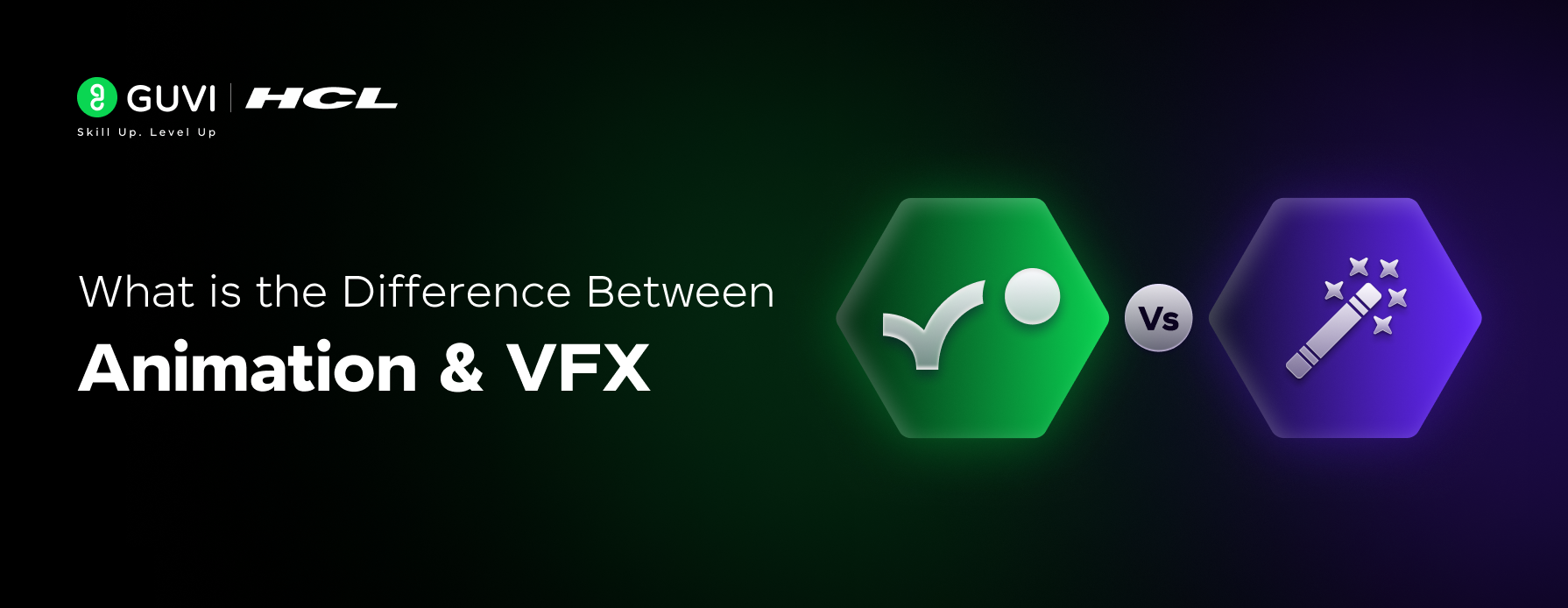
What is the Difference Between Animation and VFX?
Jul 15, 2025 5 Min Read 5264 Views
(Last Updated)
Animation and VFX (Visual Effects) are two cornerstones of the visual storytelling industry, transforming how stories are told and experienced. While both techniques aim to captivate audiences by bringing imagination to life, their underlying processes, tools, and applications differ substantially.
What exactly is the difference between animation and VFX? Animation builds entire worlds from scratch like the story of Frozen, giving life to characters and environments through handcrafted artistry. VFX, on the other hand, integrates real-world footage with computer-generated elements to create scenes that transcend reality. I mean Avatar has us all amazed even a decade later!
Hence through this article, I plan to lay down all there is to differentiate between these two amazing fields by diving into the technical and creative aspects of animation and VFX, unraveling their unique characteristics, workflows, and career pathways.
Table of contents
- What is Animation?
- Types of Animation
- Key Features of Animation
- Tools and Technologies
- Applications of Animation
- Workflow in Animation
- What is VFX (Visual Effects)?
- Types of VFX
- Key Features of VFX
- Tools and Technologies
- Applications of VFX
- Workflow in VFX
- How Exactly Are VFX and Animation Different?
- Major Difference between Animation and VFX
- Detailed Breakdown of Key Differentiators
- Skills Needed in Animation and VFX
- Skillsets for Animation
- Skillsets for VFX
- Career Pathways in Animation and VFX
- Animation Careers
- VFX Careers
- Concluding Thoughts…
- FAQs
- Which is better, VFX or animation?
- Is VFX a part of animation?
- Is 3D animation and VFX the same?
- What is the full form of VFX?
- Does VFX include coding?
What is Animation?
Animation is the art of creating motion by sequencing static images or models, simulating movement, and conveying emotions, narratives, and dynamics through visual storytelling. Animators use keyframes, interpolations, and physics simulations to bring objects and characters to life.
Types of Animation
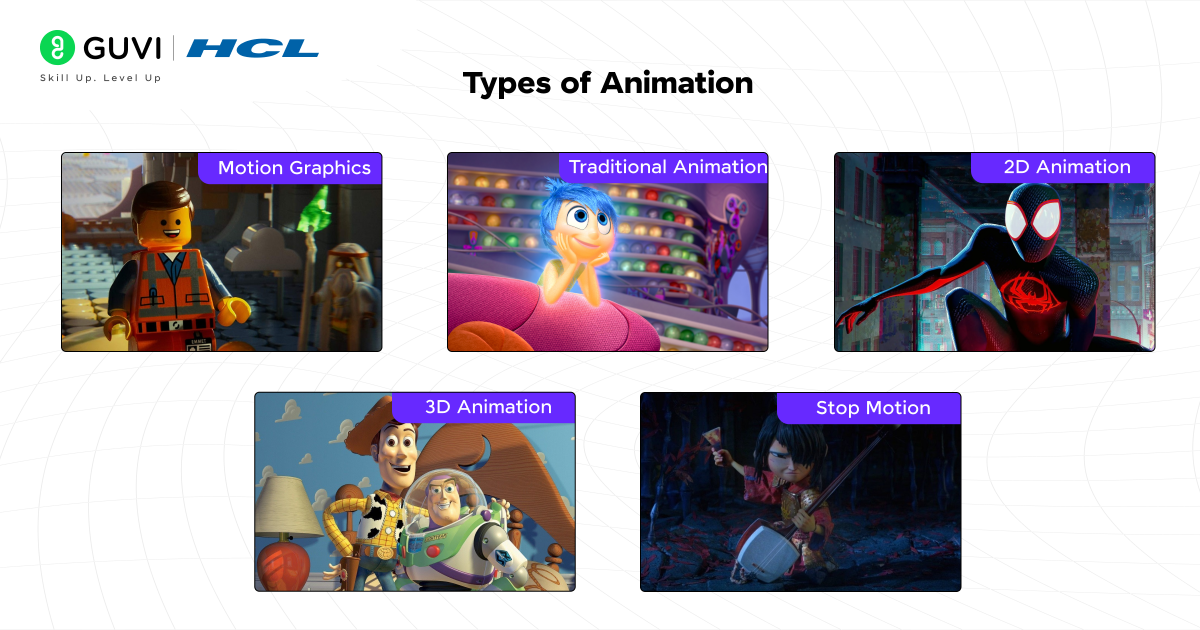
- Traditional Animation:
- Frames are drawn by hand, and each frame represents a step in motion.
- Techniques include onion skinning and flipbook animations.
- Example: Classic Disney films like Snow White.
- 2D Animation:
- Focuses on flat, two-dimensional visuals.
- Vector-based techniques ensure scalability and precision.
- Example: TV series like The Simpsons.
- 3D Animation:
- Characters and environments are modeled in 3D space.
- Features rigging (skeleton setup) and advanced physics-based simulations.
- Example: Frozen and Avatar.
- Stop Motion:
- Utilizes physical models moved incrementally and captured frame-by-frame.
- Requires meticulous attention to detail.
- Example: Wallace and Gromit.
- Motion Graphics:
- Focuses on text and design elements with dynamic transitions.
- Widely used in advertisements and explainer videos.
Key Features of Animation
- Focus on Storytelling: Animation is highly narrative-driven.
- Physics Simulation: Replicates real-world physics for realistic effects.
- Frame Rates: Typically 24 or 30 frames per second for smooth motion.
Tools and Technologies
| Tool | Purpose |
| Autodesk Maya | Industry standard for 3D modeling and animation. |
| Blender | Open-source tool for 3D design and rendering. |
| Toon Boom Harmony | Specialized software for 2D animation. |
| After Effects | Motion graphics and compositing. |
Applications of Animation
- Entertainment: Feature films, TV series, and video games.
- Marketing: Product advertisements and branding videos.
- Healthcare: Surgical procedure visualizations.
- Education: E-learning platforms and instructional videos.
Workflow in Animation
- Concept and Storyboarding:
- Develop the storyline and sketch visual plans.
- Design and Modeling:
- Create assets, characters, and environments.
- Animation:
- Define keyframes, simulate movement, and refine details.
- Rendering:
- Convert scenes into final visuals.
What is VFX (Visual Effects)?
VFX involves manipulating and enhancing live-action footage by integrating digital elements, creating effects that are either impractical or impossible to achieve during filming.
Types of VFX
- Compositing:
- Integrates multiple layers of video or images.
- Key tools: Foundry Nuke, Adobe After Effects.
- Rotoscoping:
- Manually isolating objects or people for adding effects.
- Matte Painting:
- Digitally creating expansive environments.
- Simulations:
- Generates dynamic phenomena like explosions, smoke, or liquids.
- Motion Capture:
- Captures actor movements to drive digital character animation.
Key Features of VFX
- Photorealism: Seamlessly integrates real and artificial elements.
- Dynamic Effects: Simulates natural phenomena with real-world physics.
- Precision Editing: Ensures minimal discrepancy between layers.
Tools and Technologies
| Tool | Purpose |
| Houdini | Procedural generation of effects. |
| Nuke | High-end compositing and visual editing. |
| Unreal Engine | Real-time rendering for films and games. |
Applications of VFX
- Films: Science fiction and fantasy movies like Interstellar and Avengers.
- Games: Realistic cinematic effects for immersive gameplay.
- Advertising: Creating visually impactful commercials.
- Architectural Visualization: Simulating environments before construction.
Workflow in VFX
- Pre-production: Pre-visualization and storyboarding.
- Production: Shoot with placeholders, such as green screens.
- Post-production: Add CGI elements, simulations, and composites.
How Exactly Are VFX and Animation Different?
While both VFX (Visual Effects) and animation serve to captivate audiences by bringing the impossible to life, their methods and objectives diverge significantly.
Animation focuses entirely on creating motion and life from scratch. This could involve hand-drawn sequences, 2D/3D modeling, or rigging digital characters to interact within a fabricated world. It’s used to craft fully virtual experiences, often found in films like Toy Story or video games. The process is independent of real-world footage and relies on the animator’s imagination and skill to shape every frame.
VFX, on the other hand, works as a supplement to live-action footage. It integrates computer-generated elements—such as explosions, fantastical creatures, or impossible landscapes—into real-world visuals. For instance, the Avengers movies use VFX to create otherworldly settings and superheroes’ powers. It relies heavily on techniques like green screen compositing, motion tracking, and particle simulations to ensure seamless blending with real environments.
In essence, animation creates entire universes from the ground up, while VFX enhances reality, pushing its boundaries to achieve a sense of wonder and believability. Both techniques often complement each other in modern filmmaking, as seen in movies like The Lion King (2019), which blends animated characters with photorealistic VFX landscapes.
Major Difference between Animation and VFX
| Aspect | Animation | VFX |
| Definition | Animation involves creating motion and movement from scratch using drawings or 3D models. | VFX enhances live-action footage by integrating computer-generated effects. |
| Purpose | Focuses on storytelling by creating entire sequences or characters in motion. | Enhances realism, adds grandeur, and creates impossible or expensive effects. |
| Application | Primarily used in cartoons, games, and 2D/3D animated films. | Commonly used in live-action films, advertisements, and realistic simulations. |
| Work Environment | Entirely virtual, relying on character models, rigs, and physics simulations. | Combines on-set footage with digital enhancements like CGI and compositing. |
| Creativity vs. Realism | Creativity-driven with little emphasis on matching real-world physics. | Balances creativity with real-world accuracy for seamless integration. |
| Tools and Software | Blender, Maya, Toon Boom Harmony, Krita. | Houdini, Nuke, Unreal Engine, Adobe After Effects. |
| Scope of Work | Includes character motion, lip-syncing, environmental designs, and transitions. | Includes green screen compositing, particle simulations, and set extensions. |
| Time Requirements | Generally requires a longer timeline due to manual character creation. | Post-production-focused, depending on pre-shot live footage. |
| Team Composition | Primarily animators, storyboard artists, and rigging specialists. | Includes compositors, CGI artists, motion capture specialists, and editors. |
| Nature of Output | Entirely synthetic environments and characters. | Augments real-world footage with digital enhancements. |
Detailed Breakdown of Key Differentiators
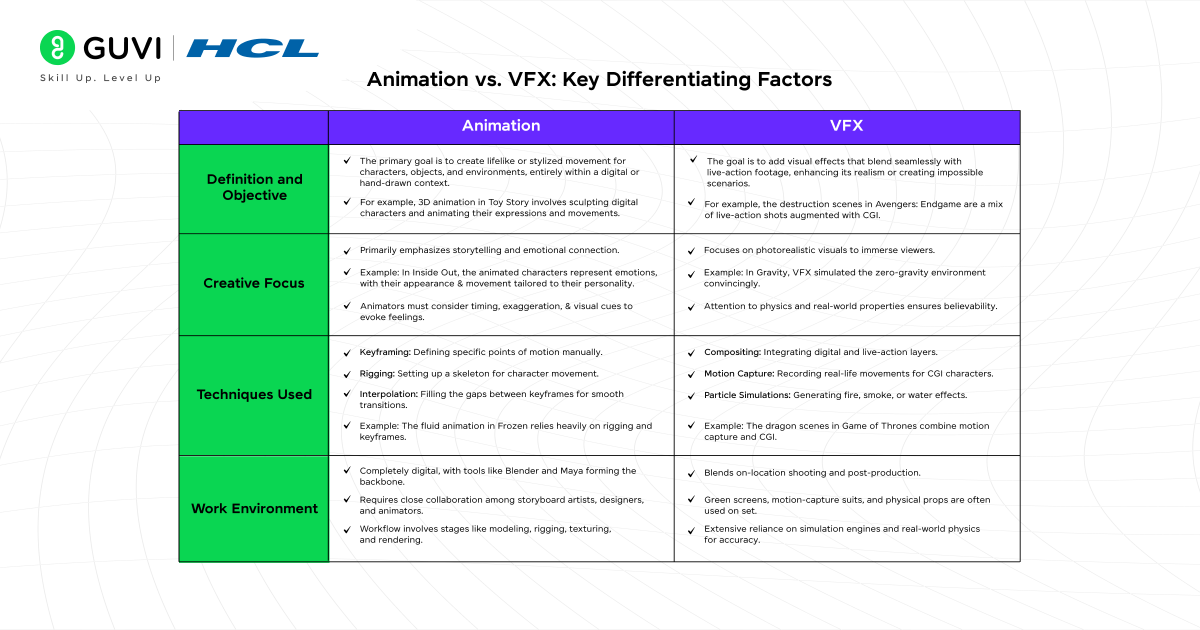
1) Definition and Objective
- Animation: The primary goal is to create lifelike or stylized movement for characters, objects, and environments, entirely within a digital or hand-drawn context. For example, 3D animation in Toy Story involves sculpting digital characters and animating their expressions and movements.
- VFX: The goal is to add visual effects that blend seamlessly with live-action footage, enhancing its realism or creating impossible scenarios. For example, the destruction scenes in Avengers: Endgame are a mix of live-action shots augmented with CGI.
2) Creative Focus
- Animation:
- Primarily emphasizes storytelling and emotional connection.
- Example: In Inside Out, the animated characters represent emotions, with their appearance and movement tailored to their personality.
- Animators must consider timing, exaggeration, and visual cues to evoke feelings.
- VFX:
- Focuses on photorealistic visuals to immerse viewers.
- Example: In Gravity, VFX simulated the zero-gravity environment convincingly.
- Attention to physics and real-world properties ensures believability.
3) Techniques Used
- Animation Techniques:
- Keyframing: Defining specific points of motion manually.
- Rigging: Setting up a skeleton for character movement.
- Interpolation: Filling the gaps between keyframes for smooth transitions.
- Example: The fluid animation in Frozen relies heavily on rigging and keyframes.
- VFX Techniques:
- Compositing: Integrating digital and live-action layers.
- Motion Capture: Recording real-life movements for CGI characters.
- Particle Simulations: Generating fire, smoke, or water effects.
- Example: The dragon scenes in Game of Thrones combine motion capture and CGI.
4) Work Environment
- Animation:
- Completely digital, with tools like Blender and Maya forming the backbone.
- Requires close collaboration among storyboard artists, designers, and animators.
- Workflow involves stages like modeling, rigging, texturing, and rendering.
- VFX:
- Blends on-location shooting and post-production.
- Green screens, motion-capture suits, and physical props are often used on set.
- Extensive reliance on simulation engines and real-world physics for accuracy.
Skills Needed in Animation and VFX
Both animation and VFX require distinct but overlapping skillsets, as they rely on a mix of creativity, technical expertise, and problem-solving. Below is a detailed breakdown of the core competencies and tools that professionals in these fields need to master.
Skillsets for Animation
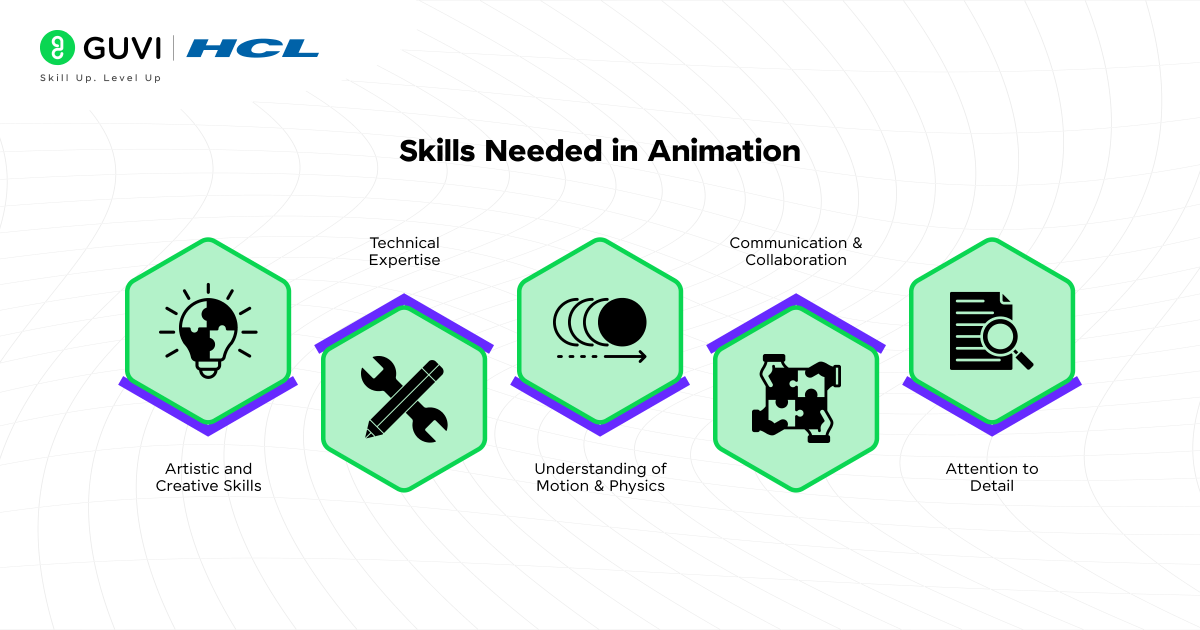
- Artistic and Creative Skills:
- Strong drawing and sketching abilities (for traditional animation or storyboarding).
- An understanding of color theory, composition, and visual storytelling.
- Technical Expertise:
- Proficiency in animation software such as Autodesk Maya, Blender, or Adobe Animate.
- Knowledge of 2D/3D modeling, rigging, and texturing.
- Mastery in rendering techniques and lighting for creating realistic or stylized visuals.
- Understanding of Motion and Physics:
- Ability to replicate lifelike or exaggerated movements.
- Grasp of principles like squash and stretch, timing, and anticipation for believable animation.
- Communication and Collaboration:
- Collaboration with directors, storyboard artists, and voice actors to bring ideas to life.
- Iterative improvement based on feedback.
- Attention to Detail:
- Precision in animating frame-by-frame sequences for fluidity.
- Consistency in character design and movement across frames.
Skillsets for VFX
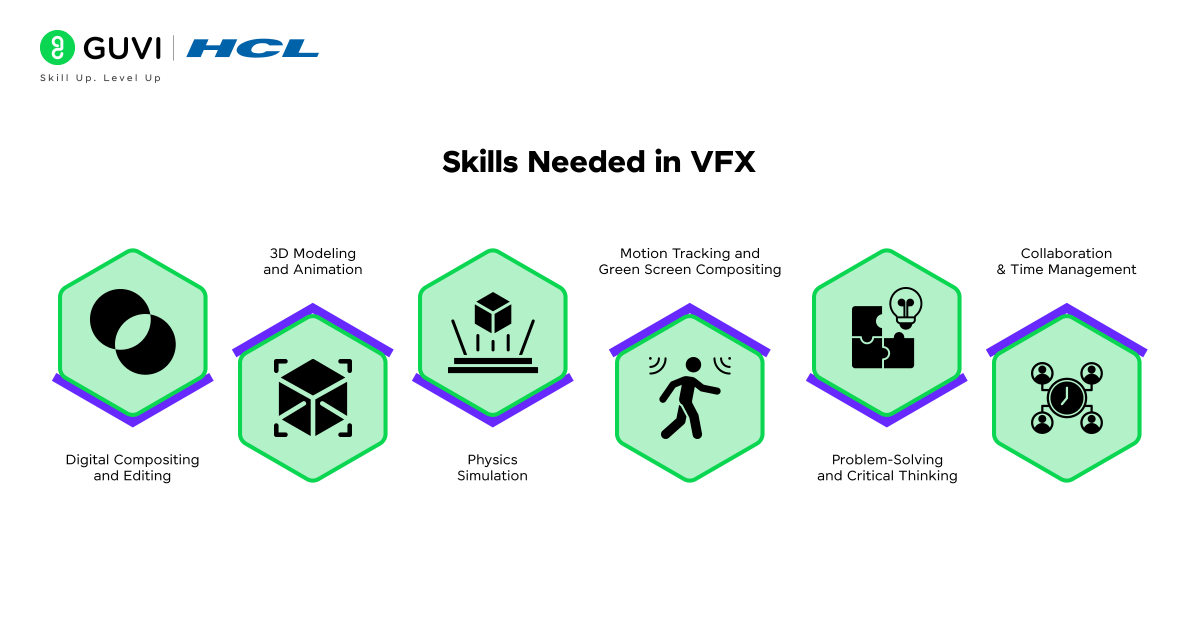
- Digital Compositing and Editing:
- Proficiency in tools like Adobe After Effects, Nuke, or Fusion for blending CGI elements with live-action footage.
- Expertise in rotoscoping, masking, and layering.
- 3D Modeling and Animation:
- Familiarity with creating 3D assets using tools like Houdini, Cinema 4D, or ZBrush.
- Integration of 3D elements into 2D footage using rendering and texturing techniques.
- Physics Simulation:
- Skills in creating particle effects for fire, water, smoke, explosions, and more.
- Use of tools like Houdini for dynamic simulations.
- Motion Tracking and Green Screen Compositing:
- Ability to track and stabilize live-action footage for seamless VFX integration.
- Expertise in chroma keying and lighting adjustments.
- Problem-Solving and Critical Thinking:
- Finding creative solutions to integrate complex VFX into practical shooting constraints.
- Adapting to technological advancements and workflow challenges.
- Collaboration and Time Management:
- Working with directors, cinematographers, and other VFX artists to meet creative goals.
- Handling tight deadlines in post-production pipelines.
Key Overlaps
- Both fields benefit from strong storytelling skills and an understanding of cinematic techniques like framing, camera angles, and lighting.
- Familiarity with scripting languages such as Python can be advantageous in automating repetitive tasks.
Career Pathways in Animation and VFX
Animation Careers
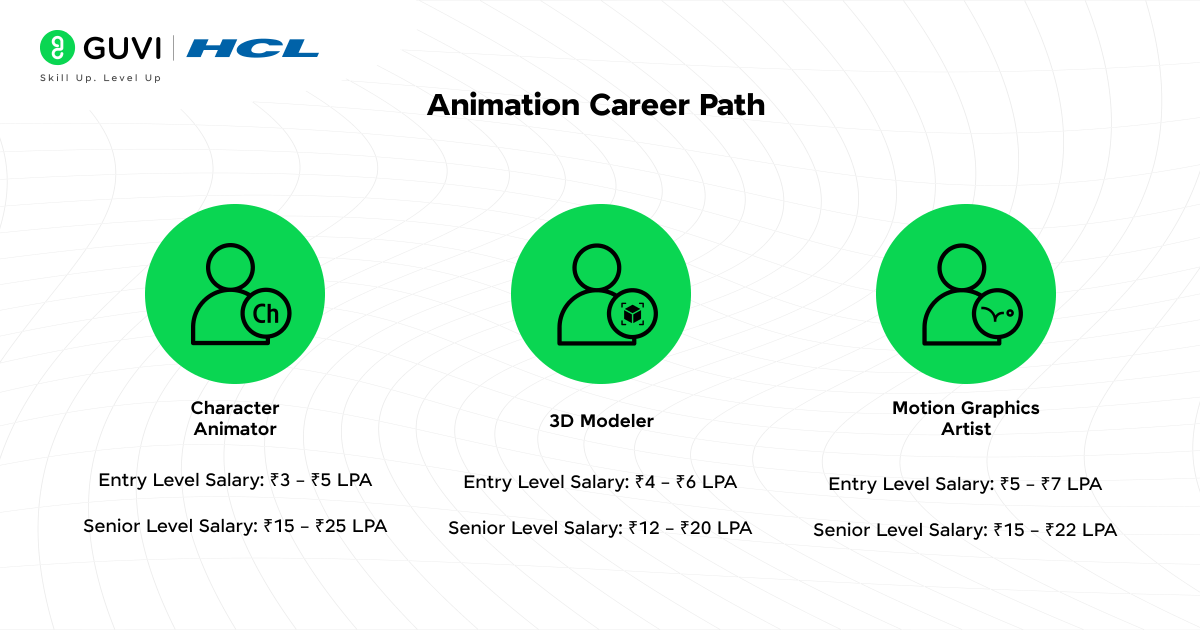
| Role | Responsibilities | Skills Required | Salaries (₹) |
| Character Animator | Brings characters to life with natural movement. | Rigging, keyframing, storytelling. | Entry: 3–5 LPA, Senior: 15–25 LPA. |
| 3D Modeler | Designs detailed character and environment models. | Sculpting, texturing, anatomy. | Entry: 4–6 LPA, Senior: 12–20 LPA. |
| Motion Graphics Artist | Creates dynamic visuals for marketing or films. | After Effects, typography, design. | Entry: 5–7 LPA, Senior: 15–22 LPA. |
VFX Careers
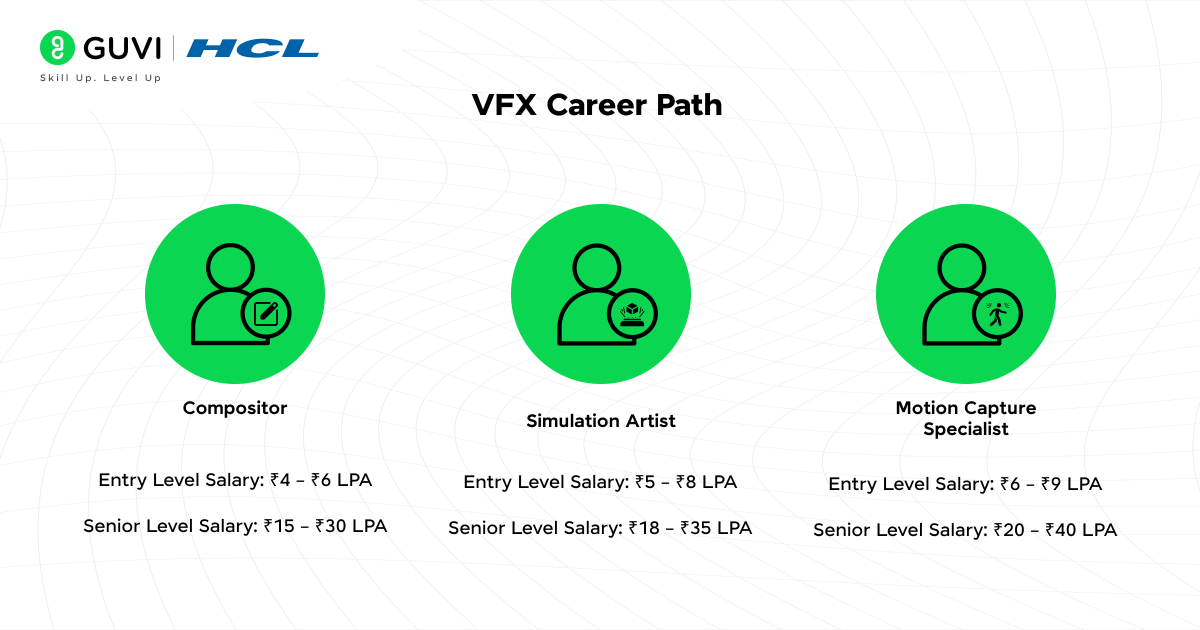
| Role | Responsibilities | Skills Required | Salaries (₹) |
| Compositor | Seamlessly integrates live-action and CGI elements. | Layering, color grading. | Entry: 4–6 LPA, Senior: 15–30 LPA. |
| Simulation Artist | Creates dynamic effects like explosions and water. | Houdini, physics simulations. | Entry: 5–8 LPA, Senior: 18–35 LPA. |
| Motion Capture Specialist | Captures and transfers actor movements to CGI. | Mocap rigs, animation pipelines. | Entry: 6–9 LPA, Senior: 20–40 LPA. |
Concluding Thoughts…
While animation focuses on crafting entire narratives from scratch, VFX amplifies the impact of live-action storytelling by pushing the boundaries of reality. Together, these fields are indispensable in industries like film, gaming, advertising, and even virtual reality.
For learners and professionals, mastering these disciplines opens doors to exciting career pathways, from animation artists to VFX supervisors. And I hope this article has been a stepping stone to an exciting pathway in your career.
If you have any doubts about these fields or the article, reach out to me in the comments section below. Thank you for reading this guide!
FAQs
VFX is ideal for creating realistic effects in live-action footage, while animation focuses on bringing characters and scenes to life digitally. The better choice depends on your career interest in live-action or storytelling.
VFX and animation are distinct fields, but VFX often incorporates animation techniques to create visual effects, blending them into live-action footage.
No, 3D animation involves creating three-dimensional characters and objects, while VFX combines real-world and digital elements to enhance live-action visuals.
The full form of VFX is Visual Effects.
Yes, coding is sometimes required in VFX for scripting tools, creating simulations, or procedural effects using languages like Python or C++, but it’s not at all a compulsion. You can be a good VFX artist even without knowing code but a great one always does.





















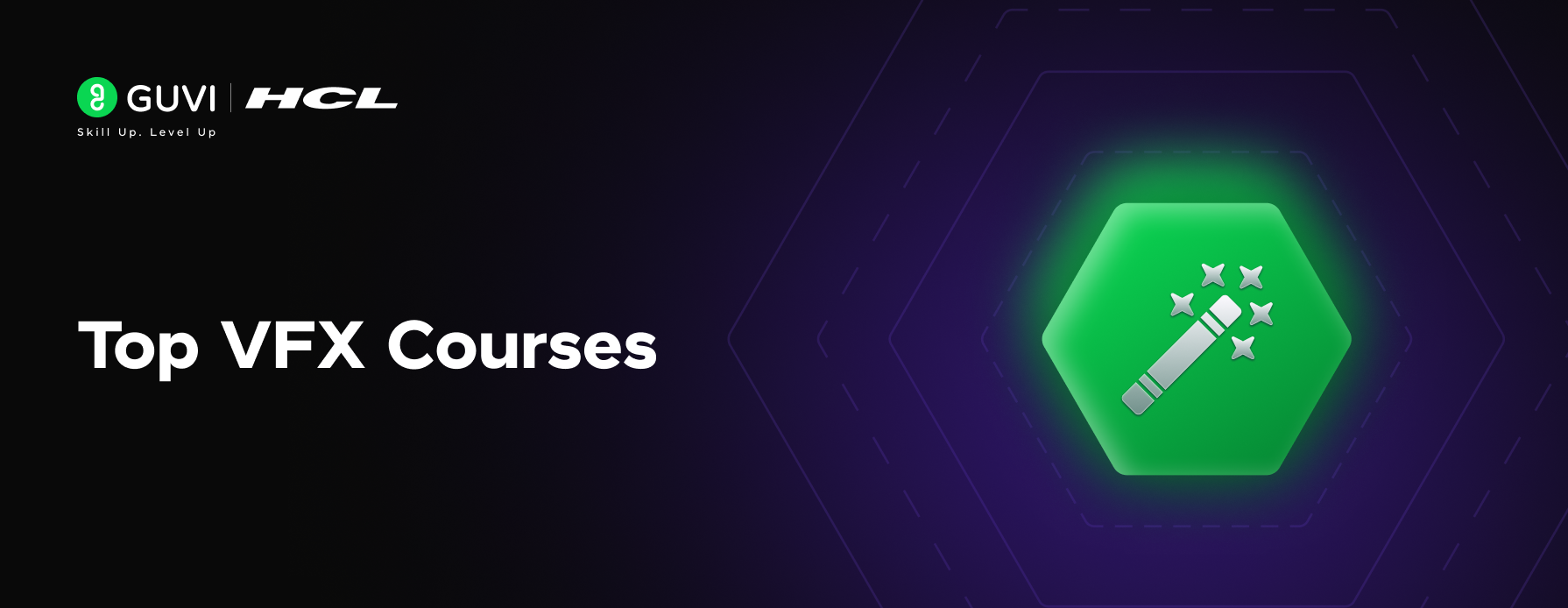
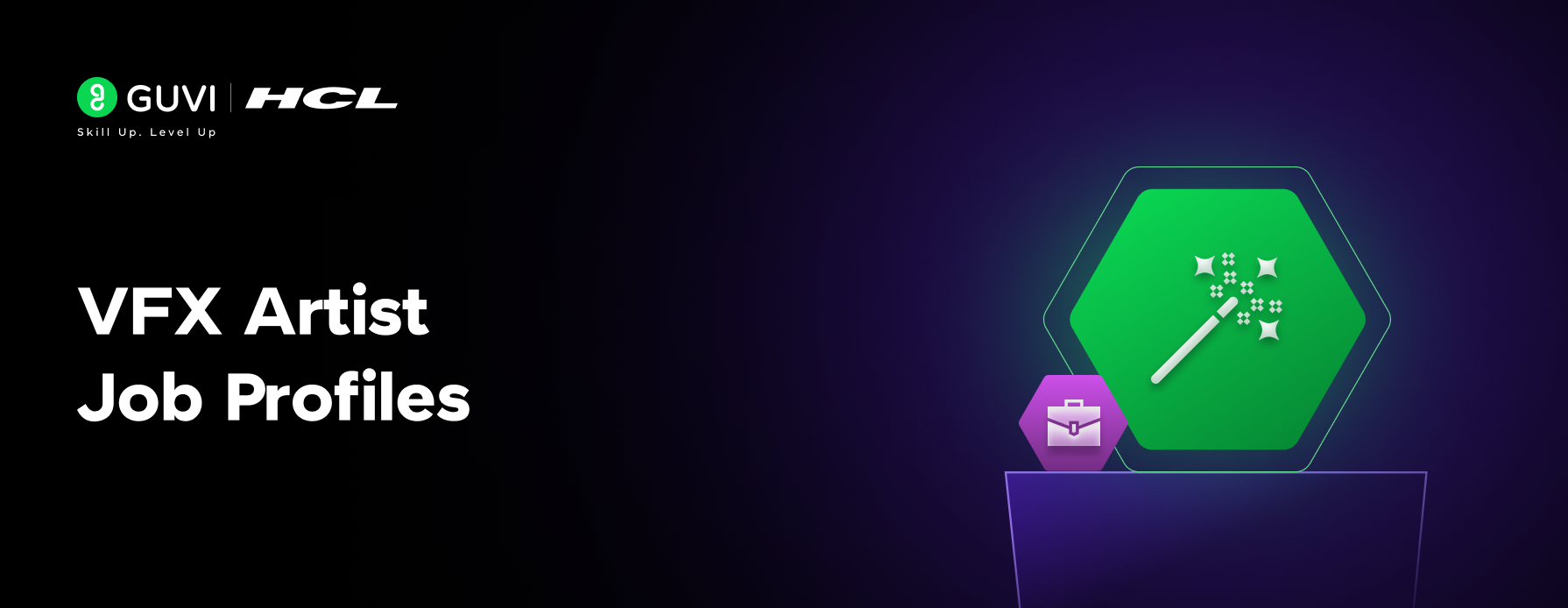

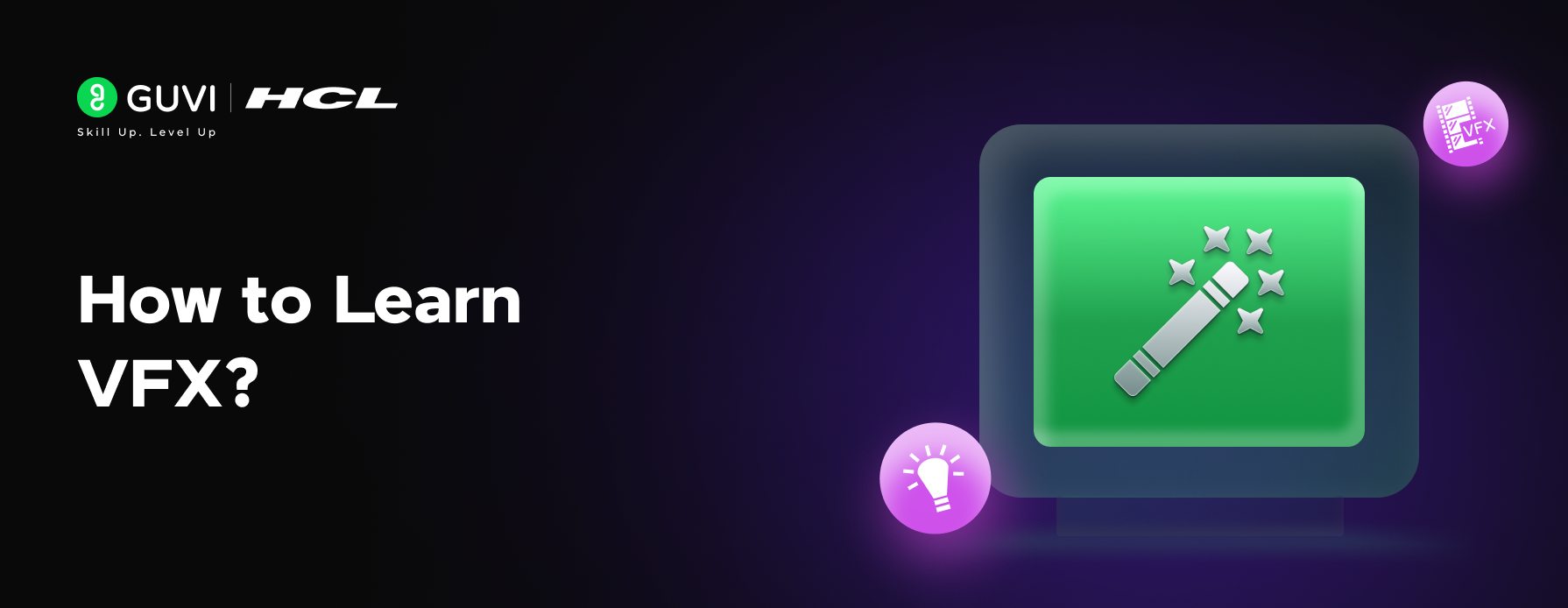
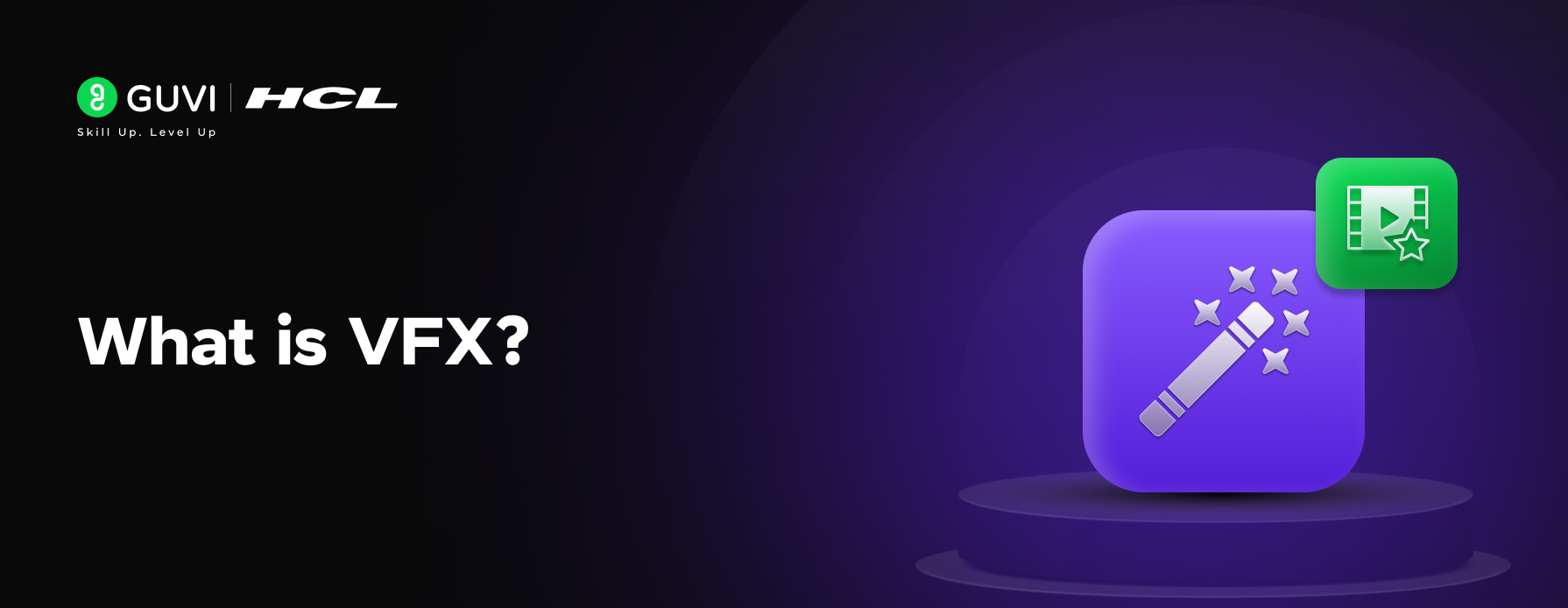
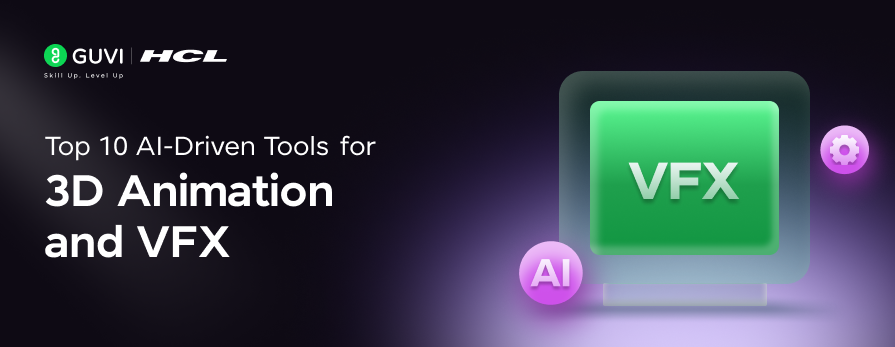
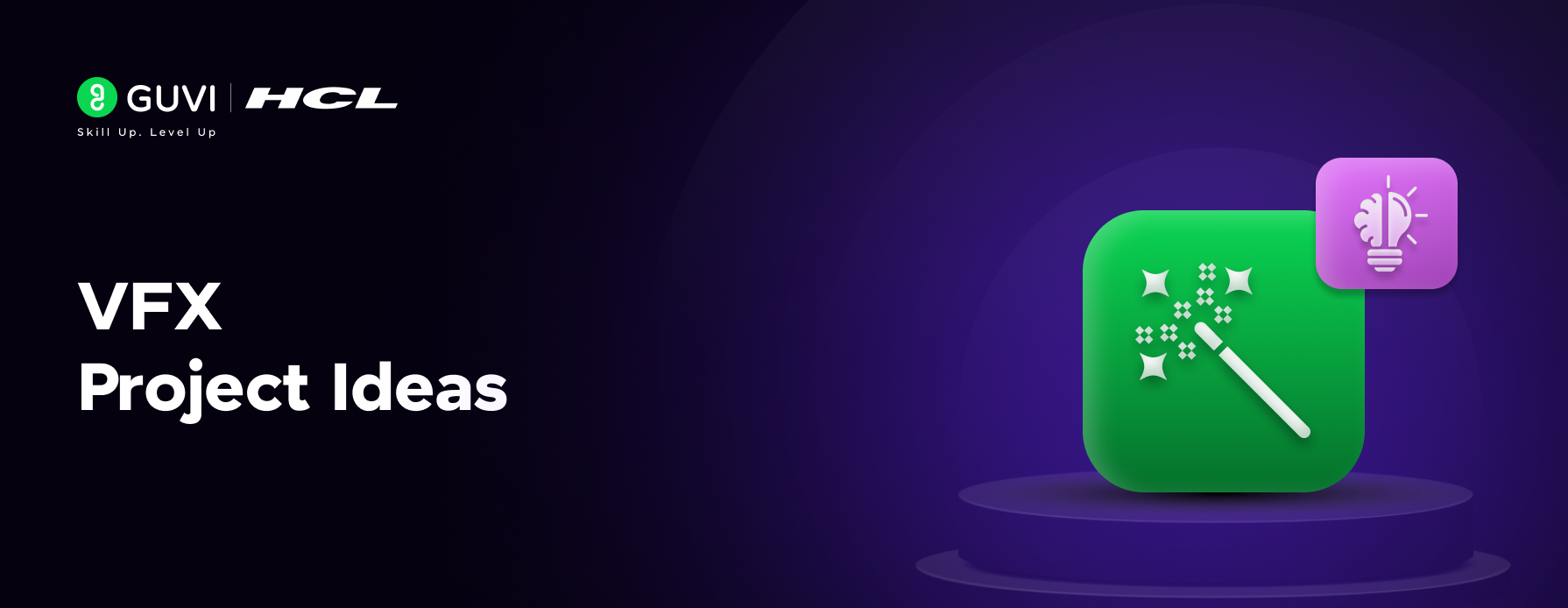
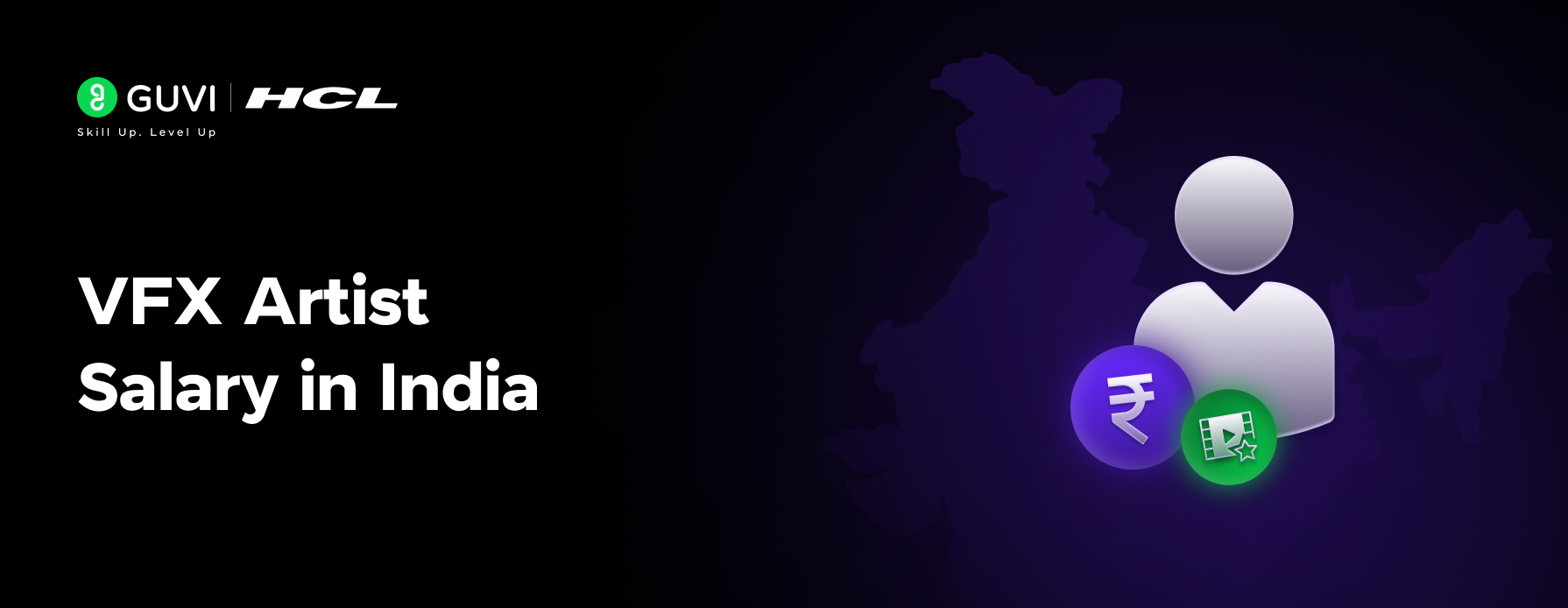
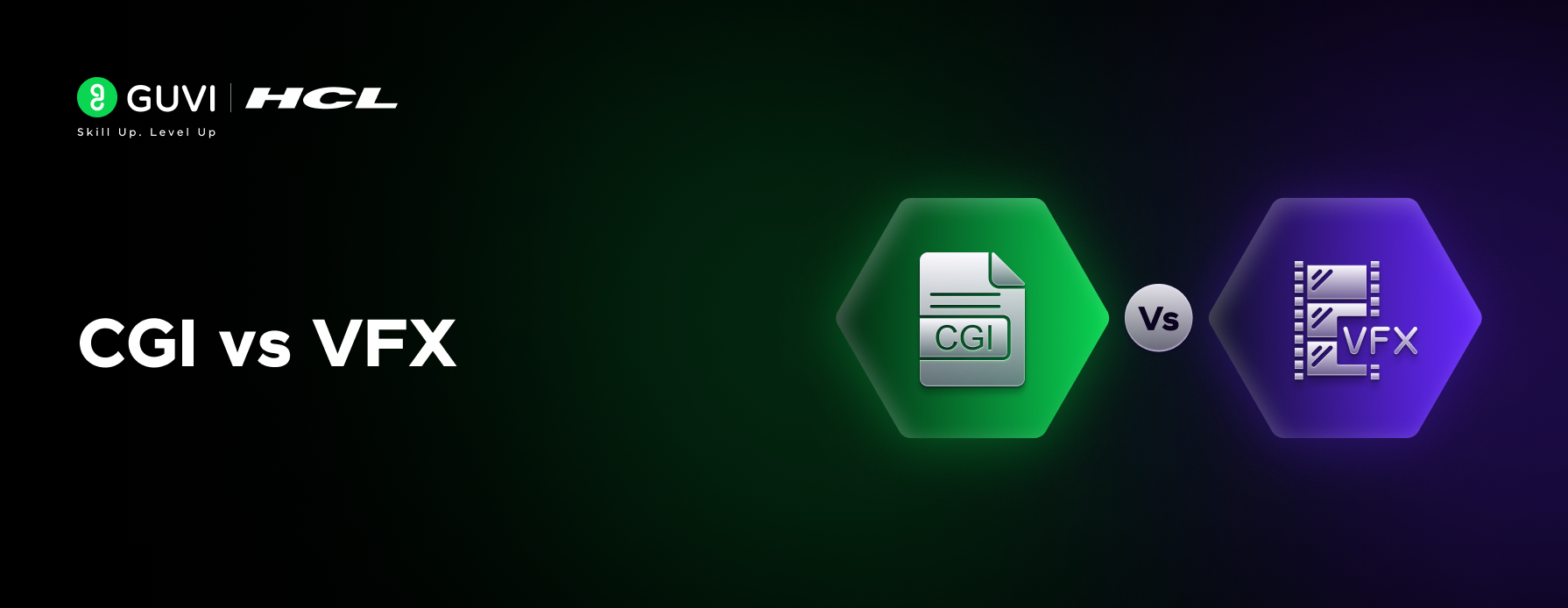

Did you enjoy this article?